On the appearance of modern submarine torpedoes
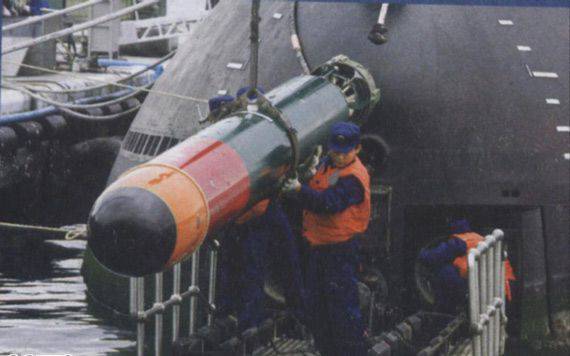
The real performance characteristics of foreign torpedoes (deliberately underestimated by some domestic “specialists”) and their “complex characterization”
The mass-dimensional and transport characteristics of modern foreign torpedoes of caliber 53 cm compared with our export torpedoes UGST and ТЭ2:
When comparing domestic and foreign torpedoes, it is obvious that if for the UGST there is some lag from the Western specimens for the performance characteristics, then for this TE2 the lag in the performance characteristics is very large.
Given the secrecy of information on modern homing systems (CLS), control (CS) and telecontrol (STS), it is advisable for their evaluation and comparison to identify the main generations of the development of post-war torpedo weapons:
1 - straight torpedoes.
2 - torpedoes with passive CLS (50-ies).
3 - the introduction of active high-frequency CCH (60-s).
4 - low-frequency active-passive CCH with Doppler filtering.
5 is the introduction of secondary digital processing (classifiers) with a massive transition (heavy torpedoes) to hose telecontrol.
6 - digital CCH with an increased frequency range.
7 - ultra wideband CCH with fiber optic hose telecontrol.
Torpedoes, which are in service with the Navy of Latin America
Torpedo Mk48
The transport characteristics of the first modification of the Mk48 - mod.1 (see tab. 1) are known.

Since mod.4 has been modified, the length of the fuel tank has been increased (430 kg of OTTO II fuel instead of 312), which already gives an increase in the range at speed 55 knots over 25 km.
In addition, the first design of the jet engine was developed by American experts at the end of 60 (Mk48 mod.1), the efficiency of the jet engine developed a little later, our torpedo UMGT-1 was 0,68. At the end of 80s, after a long haul of a new torpedo “Physicist-1”, the efficiency of its jet engine was increased to 0,8. It is obvious that American experts carried out similar work, with an increase in the efficiency of the water cannon of the Mk48 torpedoes.
Given this factor and increasing the length of the fuel tank, the developers' statements about the achievement of the 35 km range at 55 speed knots for modifications to the torpedo with mod.4 seem to be reasonable (and repeatedly confirmed in the line of export deliveries).
The statements of some of our specialists about the “compliance” of the latest Mk48 with the early characteristics (mod.1) of transport characteristics are aimed at masking the lag in the transport characteristics of the UGST torpedoes (due to our tough and unreasonable safety requirements, which led to the introduction of a limited-capacity fuel tank).
A separate question is the maximum speed of the latest modifications of the Mk48.
It is logical to assume an increase in the speed of 70 knots achieved from the beginning of the 55-s to “at least 60”, at least due to an increase in the efficiency of the water jet of new modifications of the torpedo.
When analyzing the transport characteristics of electric torpedoes, it is necessary to agree with the conclusion of the well-known expert of the Central Research Institute Gidropribor, A.S. Kotov "electric torpedoes exceeded thermal characteristics in transport characteristics" (for electric ones with AlAgO batteries and thermal fuel-powered OTTO II). The computed data check performed on the DM2A4 torpedo with the AlAgO battery (50 km at 50 knots) was close to that declared by the developer (52 nodes at 48 km).
A separate question is the type of batteries used in DM2A4. “Officially” AgZn batteries are installed in DM2A4, in connection with which some of our specialists accept the design characteristics of these batteries as domestic ones. However, representatives of the developer stated that the production of batteries for DM2A4 torpedoes in Germany is impossible for environmental reasons (plant in Greece), which clearly indicates a significantly different design (and characteristics) of DM2A4 batteries compared to domestic AgZn batteries (which have no special production limitations on ecology).
Despite the fact that AlAgO batteries have record levels of energy, today a steady trend has emerged in foreign torpedoism to use much less energy-consuming, but providing the possibility of mass torpedo firing universal lithium-polymer batteries (Black Shark torpedoes (53 caliber cm) and Black Arrow (32 cm ) WASS), - even at the cost of a significant reduction in performance characteristics (decrease in range at maximum speed approximately doubled from DM2A4 for Black Shark).
Mass torpedo firing is an axiom of modern Western torpedism.
The reason for this requirement is the complex and changing environment in which torpedoes are used. The “unitary breakthrough” of the US Navy — the adoption of the Mk60 and Mk70 torpedoes with sharply improved TTXs at the end of the 46's — the beginning of the 48's — was associated with the need to shoot a lot to develop and master new sophisticated homing, control and telecontrol systems . According to its characteristics, unitary fuel OTTO-2 was frankly average and inferior in terms of energy to the peroxide-kerosene pair already successfully mastered in the US Navy by more than 30%. But this fuel has greatly simplified the device of torpedoes, and most importantly - dramatically, more than an order of magnitude to reduce the cost of the shot.
This ensured the mass shooting, successful development and development of new torpedoes with high performance characteristics in the US Navy.
By adopting the Mk2006 mod.48 torpedo in 7 (approximately at the same time as the “Physicist-1” state tests), the US Navy managed to produce more 2011 torpedo shots Mk2012 mod.300 Spiral 48NNXX years. modification of the software 7-th model of the torpedo). That's not counting the many hundreds of shots (for the same time) of the previous “mods” of the Mk4 from the modifications of the latest model (mod.4 Spiral 7-48).
The British Navy during the testing period of the StingRay mod.1 torpedoes (a series with 2005 g.) Conducted a 3 series of firing:
The first, in May, 2002 at the AUTEC (Bahamas) 10 torpedoes trap of the Trafalgar-type PLA (with evasion and the use of CRPD), 8 hoverings were received.
The second is September 2002 on submarines at medium and low depths and lying on the ground (the latter is unsuccessful).
The third is November 2003, after the software was finalized at the BUTEC test site (Shetland Islands) according to the Swiftshur PLA, 5 was obtained from 6 hoverings.
In total, over the test period, 150 was fired with a StingRay mod.1 torpedo.
However, here it is necessary to take into account that when developing the preceding StingRay torpedo (mod.0), about 500 tests were conducted. To reduce this number of firing for mod.1, the system for collecting and recording data of all firing, and implementing a “dry landfill” on its base for pre-testing new CCH solutions based on this statistics, allowed.
A separate and very important issue is the testing of torpedo weapons in the Arctic.
The US and British navies conduct them on a regular basis during the ICEX's periodic exercises with the execution of mass torpedo shots.
For example, during ICEX-2003, Connecticut's PLA released 2 weeks, and ICEX-2003 station personnel removed ADAR torpedoes from under the ice of 18.
In a series of tests, Connecticut submarines attacked the target simulator provided by the US Navy Underwater Warfare Center (NUWC) with torpedoes, but in most cases, the submarine used the remote control of the weapon as a target for its own torpedoes.
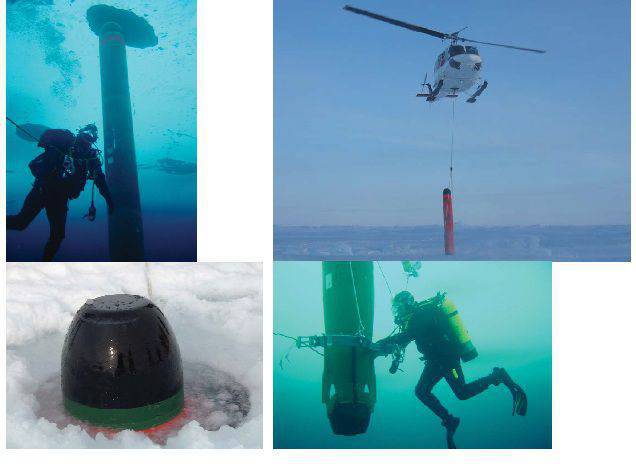
A certain “anomaly” with low firing statistics among Western torpedoes is the MU90 mini torpedo of the EuroTorp consortium (Italy, France).
During the tests (sea qualification tests from the middle of 1994 until July 1996 - 100 launches, 1997 – 2001 still 50 launches) and during combat training (shooting mainly mock-ups).
When studying the issue (according to the materials of the Western media) “it suddenly turns out” that at the official “beginning of deliveries from 2001” in the French Navy, the torpedo was adopted only in 2008. Numerous MU90 photo shoots on the Internet actually, in most cases, turn out to be torpedo fired shots.
Even more interesting details were contained in the documents on the Australian torpedo tender. Formally, in terms of performance characteristics, MU90 is “the best small-sized torpedo in the world” and significantly exceeds the American rival Mk54.
However, the position of the supporters of the Mk54 was - before believing in the characteristics of MU90 (and “reports on the shooting of other fleets without translation to English”) to conduct test shooting. With their fulfillment, it turned out that not everything in MU90 is as good as “advertising promises”.
However, the most important argument in favor of the version of the existence of a number of problems for MU90 is the termination of the activities of the EuroTorp consortium and the independent development of MU90 (new modification) Black Arrow by WASS already with a lithium-polymer battery, which provides large shooting statistics. Probably a number of problems MU90 forced to take such a step (at the cost of significantly reducing the performance characteristics).
Thus, economic indicators of the operation of torpedoes are a very important requirement, and directly affect the quality of development and development of torpedoes on navy, and, accordingly, the possibility of disclosing the complete TTX incorporated in the design.
The foundation of mass torpedo firing in the US Navy is the low cost of the shot and the participation of the fleet in the operation (reprocessing) of torpedoes. The latter is a matter of principle. Some of our specialists, still in 90x, put forward an unfounded thesis that "in the west, the Navy does not exploit torpedoes, but industry does everything." The falsity of this thesis is confirmed by the documents of the US Navy, most clearly - a textbook torpedo 2 class (is in the public domain).
Page of the textbook "Class 2 Torpedist USA Navy" with a description of the equipment and technology perepodgotovleniya torpedoes Mk 48
In the US Navy, a huge amount (in comparison with us) of torpedo firing is provided not at the expense of financial expenses (as stated by some “specialists”), but precisely because of the low cost of the shot.
Due to the high cost of operating the Mk50 torpedo from the US Navy ammunition. The figures for the cost of the Mk48 torpedo shot in the open foreign media are not available, but it is obvious that they are much closer to $ 12 thousand - Mk46 than to $ 53 thousand - Mk50, according to 1995.
The principal issue for us today is the timing of the development of torpedo weapons. As the analysis of Western data shows, it cannot be less than 6 years (in fact, more):
United Kingdom:
• Sting Ray torpedo upgrades (mod.1), 2005, development and testing took 7 years;
• Spearfish torpedo upgrades (mod.1) are being upgraded from 2010, planned for use in 2017.
The timing and stages of the development of torpedoes in the US Navy are shown in the diagram.
Thus, the statements of some of our specialists about the "development capabilities" of the new torpedoes for 3 of the year are without any serious grounds and are a deliberate deception of the command of the Navy and the Armed Forces and the leadership of the country.
Extremely important in the western torpedo building is the issue of low noise torpedoes and shot.
Comparison of external noise (from the stern) of the Mk48 mod.1 (1971) torpedoes with the noise level of nuclear submarines (probably Permit, Sturgeon types of the end of 60x) at 1,7 kHz:
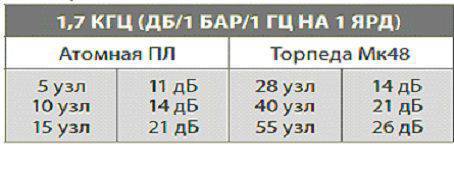
Thus, it can be seen that in terms of broadband noise in the direction of the stern of the torpedo, the Mk 48 mod.1 torpedo on the low-noise driving mode (28 knots) approximately corresponded to the noise of the Perm and Sturge submarines at 10 knots speed, was very quiet for its time.
Today, in foreign GAS, along with the noise-finding mode in a wide frequency band, the main search mode is the detection of characteristic discrete components (DS), the reduction of which, taking into account the small diameter of the hulls and high power of the power-generating installation (ESA), torpedoes is a significant difficulty.
This allowed in the west to develop a number of compact OAS detection torpedoes with a compact long antenna.
Promotional materials from Rafael show the 80's end torpedoes detection distance - the beginning of 90-s DM2A3 (electric) - more than 5 km and NT-37C (thermal) - more than 14 km, armed with the Israeli Navy.
It should be borne in mind that the noise of the new modifications of the Mk48 torpedoes on the low-noise driving mode should be significantly lower than the NT-37C and be much closer to DM2A3.
The main conclusion from this is the ability to perform covert torpedo attacks with modern foreign torpedoes from long ranges (over 20 – 30 km).
Long-range shooting is impossible without effective remote control (TU).
In foreign torpedo building, the task of creating an effective and reliable telecontrol was solved at the end of 60 with the creation of a TU hose reel, which ensured high reliability, a significant reduction in restrictions on maneuvering submarines with TU, and multi-torpedo salvos with TU.
Modern western hose telecontrol systems have high reliability and practically do not impose restrictions on submarine maneuvering. To prevent the telecontrol wire from getting into the screws on many foreign diesel-electric submarines on the stern rudders, a protective cable is stretched. With a high probability, it is possible to assume the possibility of telecontrol up to full stroke of diesel-electric submarines.
The telecontrol hose reel is not only not a “secret” for us, but at the beginning of the 2000's, the Gidropribor Central Research Institute developed and delivered the Chinese Navy for the 211ТТ1 product to a LKTU.
Half a century ago, in the west, it was conscious that the optimization of the parameters of the components of a torpedo complex should not be carried out separately (components), but with a view to ensuring maximum efficiency just as a complex.
To do this in the west (as opposed to the Navy of the USSR):
• work began on a sharp decrease in the noise of torpedoes (including at low frequencies — working for the GAS PL;);
• high-precision control devices were applied, which ensured a sharp increase in the accuracy of torpedoes motion;
• Requirements for the performance characteristics of the SJC PL were clarified with for the effective use of remote-controlled torpedoes over long distances;
• the automated command and control system (ASBU) was deeply integrated with the SJC or became part of it (to ensure the processing of not only "geometric" information of firing tasks, but also jamming)
Despite the fact that all this has been introduced into the Navy of foreign countries since the beginning of the 70s of the last century, we have not realized this yet!
If in the west a torpedo is a high-precision complex for covertly hitting targets from a long distance, then we still have “torpedoes - melee weapons”.
The effective firing distances of western torpedoes are approximately 2 / 3 telecontrol wire lengths. Taking into account 50 – 60 km on torpedo coils, common to modern Western torpedoes, effective distances are obtained up to 30 – 40 km.
At the same time, the effectiveness of domestic torpedoes, even with remote control at distances of more than 10 km, is sharply reduced due to low remote control performance characteristics and low accuracy of outdated control devices.
Some experts argue that the submarine detection distances are supposedly small and therefore “large effective distances are not needed”. One cannot agree with this. Even during a collision at the “dagger distance”, during the maneuvering process during the battle, the distance between the submarines is very likely to increase (and the US Navy submarines specially worked out the distance gap with the care of effective torpedoes).
The difference in the effectiveness of the foreign and domestic approach is a “sniper rifle” against the “pistol”, and given the fact that the distance and conditions of the battle are not determined by us - the result of this “comparison” in battle is obvious - in most cases we will be shot (including in the presence in the ammunition of our submarines "promising" (but with outdated ideology) torpedoes).
In addition, it is also necessary to dispel the misconception of some experts that “torpedoes are not needed against surface targets, because there are rockets. " From the moment the first missile (ASM) emerges from the water, the submarine does not just lose stealth, but becomes an object of attack aviation enemy anti-submarine weapons. Given their high efficiency, a salvo of anti-ship missiles puts submarines on the brink of destruction. Under these conditions, the ability to carry out a covert torpedo attack by surface ships from long distances becomes one of the requirements for modern and promising submarines.
Obviously, serious work is needed to eliminate the existing problems of domestic torpedoes, first and foremost R & D on the subject:
• modern noise-resistant ultra-wideband CLE (at the same time, joint testing of CLE and new countermeasures is extremely important);
• high-precision control devices;
• new torpedo batteries - both powerful disposable and reusable lithium-polymer batteries (to provide high firing statistics);
• fiber optic high-speed telecontrol that provides multi-torpedo salvos at a distance of several tens of kilometers;
• stealth torpedoes;
• integration of the "board" of torpedoes and GAK PL for complex processing of interfering signal information;
• development and verification by firing of new methods for the use of remote-controlled torpedoes;
• testing of torpedoes in the Arctic.
All this undoubtedly requires a lot of shooting statistics (hundreds and thousands of shots), and against the background of our traditional “economy” it seems at first glance unreal.
However, the requirement of submarine forces in the Russian Navy also means the requirement of their modern and effective torpedo weapons, which means all this great work needs to be done.
It is necessary to eliminate the existing lag behind the developed countries in torpedo weapons, with the transition to the generally accepted ideology of the world torpedo submarine weapons as a high-precision complex that ensures the defeat of secretive targets from large distances.
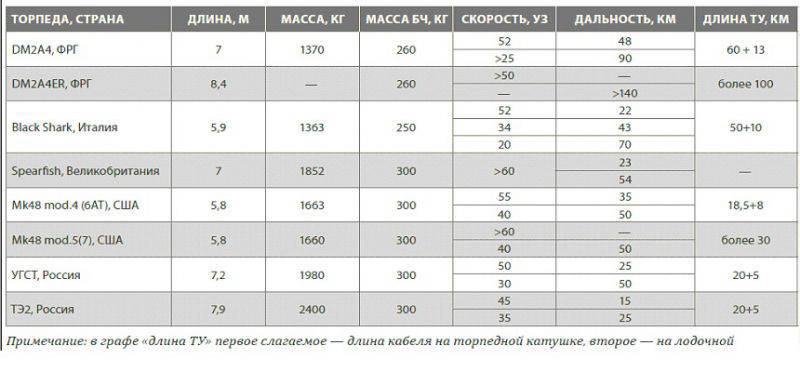
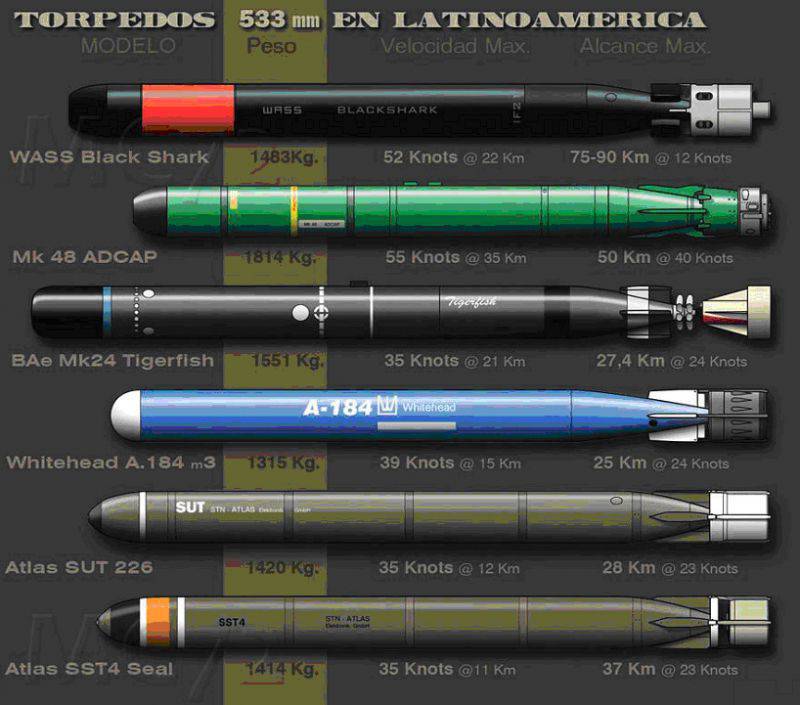
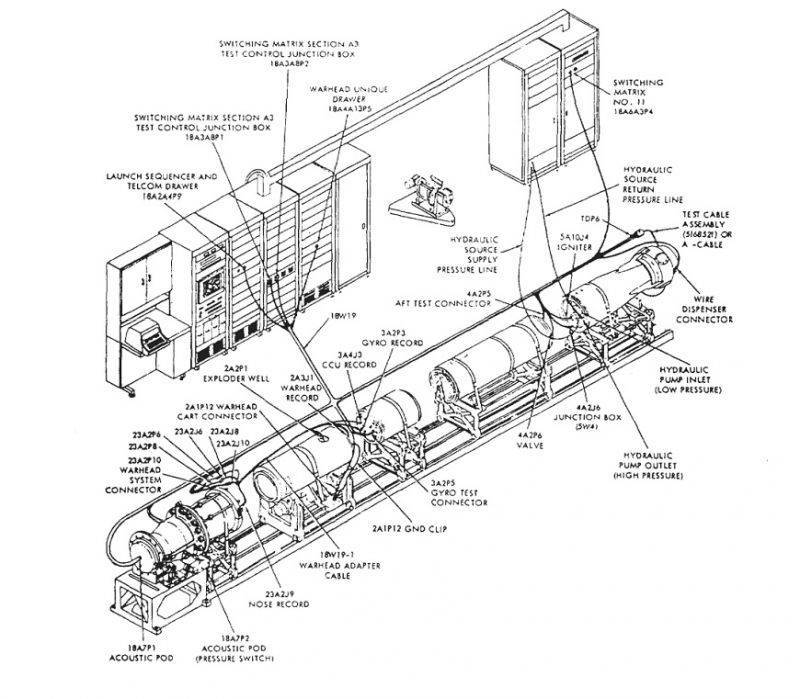
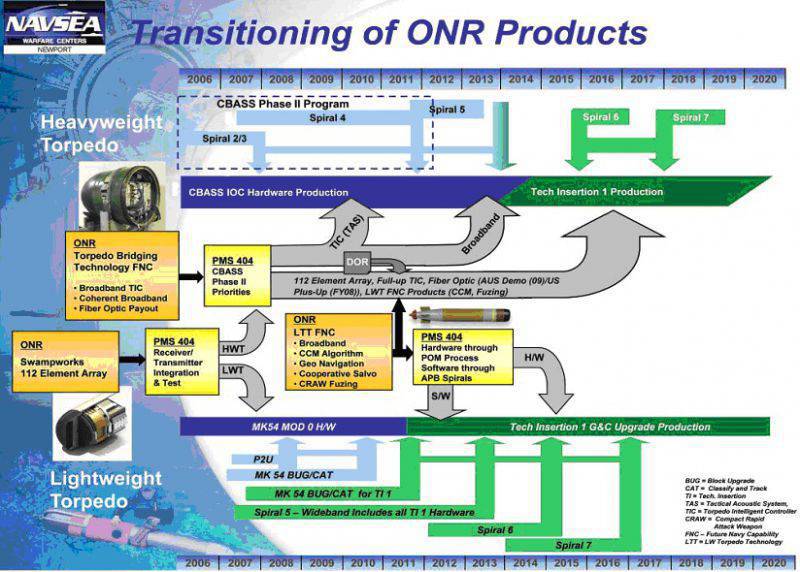
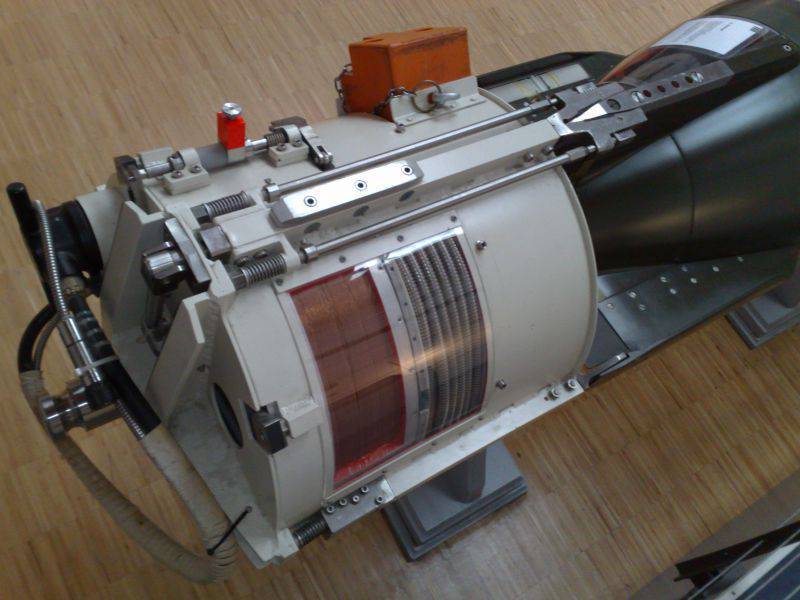
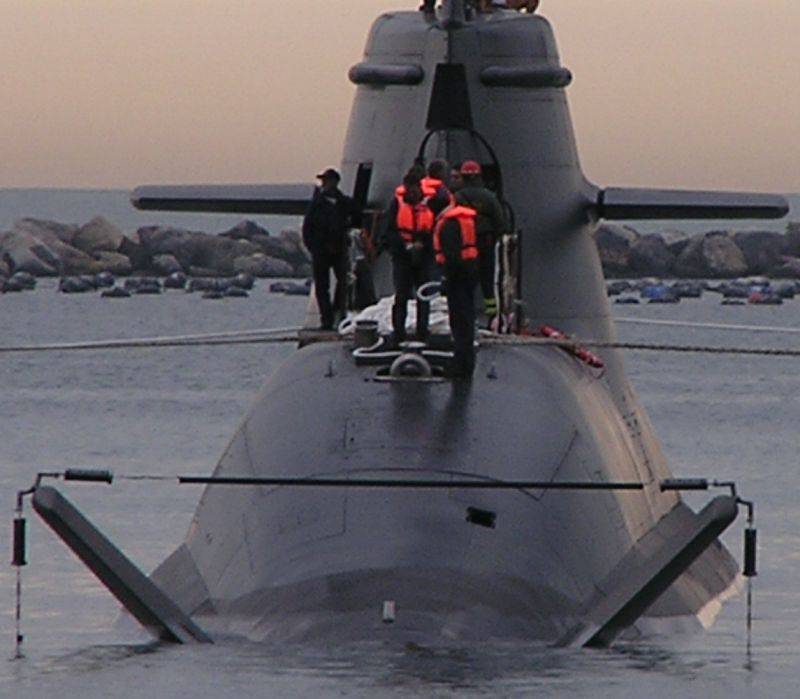
Information